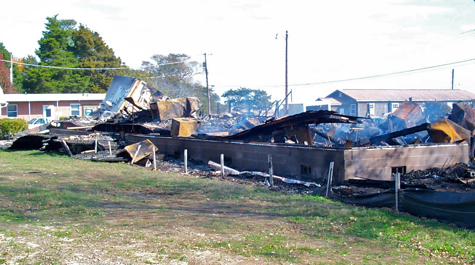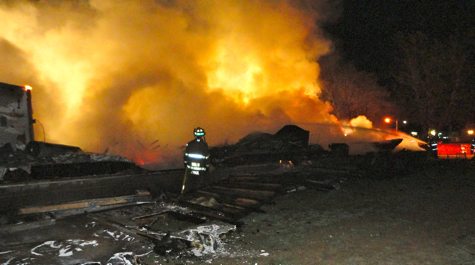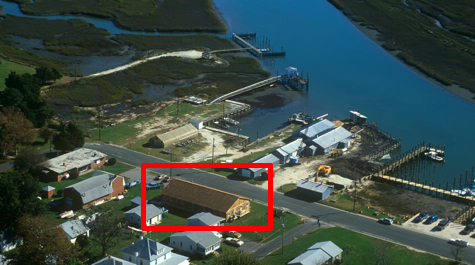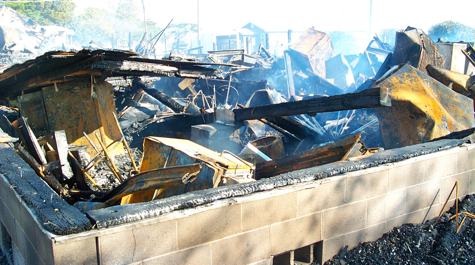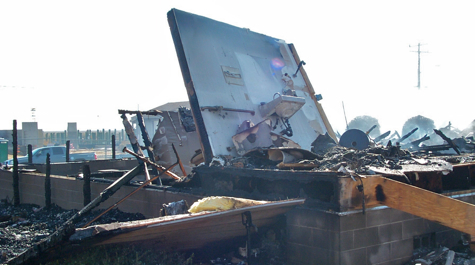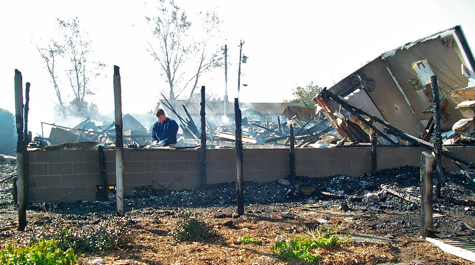Fire destroys building at VIMS Eastern Shore Laboratory
A fire at the Eastern Shore Laboratory (ESL) of the College of William and Mary's Virginia Institute of Marine Science destroyed the facility’s main research building, Seaside Hall, which includes a small library, classroom space, and several offices and laboratories. There was no one inside the building when the fire broke out in the early morning hours of Thursday November 18th, and there were no injuries. The lab is located in the small seaside village of Wachapreague.
The cause of the fire is under investigation by State Police.
ESL Director Dr. Mark Luckenbach says the fire destroyed “100 percent” of the equipment and materials in the 3,100 square-foot building, including computers, microscopes, glassware, and other laboratory and field gear.
Also lost was a shellfish collection and preserved specimens of fish and invertebrates. One irreplaceable loss was a collection of pressed algae with specimens dating back to the 1960s. No live creatures are housed in the building.
Luckenbach says there was no loss of computer data by VIMS scientists, as important digital files are backed up to servers in other buildings or on the web.
VIMS staff are now in the process of generating an inventory of building contents for insurance purposes. A preliminary estimate by VIMS Risk Manager Carol Tomlinson places the monetary value of the building and its contents at more than a million dollars.
Two state biologists—from the Virginia Department of Games and InlandFisheries and the Division of Natural Heritage—lease office space in the building and also suffered losses of materials and equipment.
All public events scheduled for the facility have been cancelled for the foreseeable future. This includes the public lecture on summer flounder scheduled for December 1st.
Luckenbach praised local firefighters, saying they responded in less than 5 minutes after receiving notice of the fire. He also praised his staff for their help in dealing with the fire and its aftermath.
Luckenbach says he also appreciates the kind words he’s received fromscientists and students from around the Commonwealth, nation, and world who have used the building for research and class work since it opened in 1995.
The Eastern Shore Laboratory serves as both a field station in support of research and teaching and as a site for resident research in coastal ecology and aquaculture. During its 40-year history, the laboratory has become internationally recognized for shellfish research.














